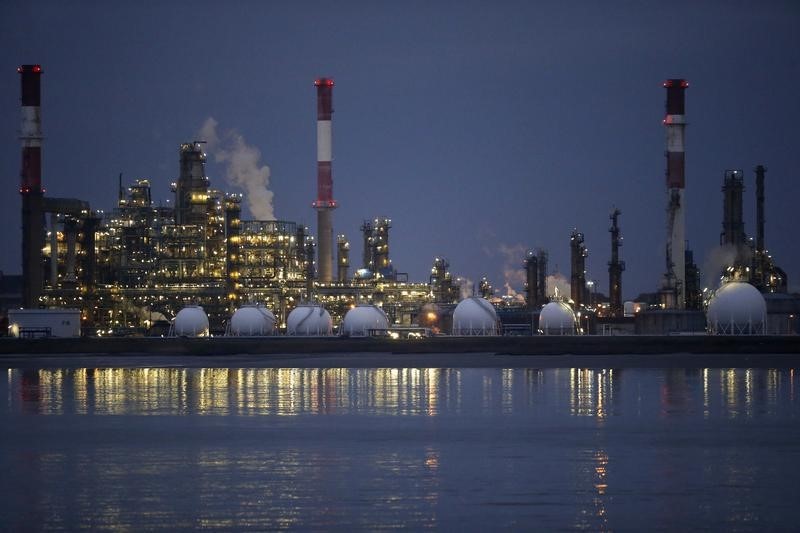* U.S. crude stocks down by 8.1 mln barrels to 495.6 mln -API
* U.S. 2018 oil production outlook slightly revised downward - EIA (Updates prices)
By Henning Gloystein
SINGAPORE, July 12 (Reuters) - Oil prices rose more than 1 percent on Wednesday, extending gains from the previous day as the U.S. government cut its crude production outlook for next year and as fuel inventories plunged.
Brent crude futures LCOc1 were up 60 cents, or 1.3 percent, at $48.12 per barrel by 0657 GMT, while U.S. West Texas Intermediate (WTI) crude futures CLc1 were at $45.72 per barrel, up 68 cents, or 1.5 percent.
Both settled about 1.4 percent higher on Tuesday.
"The oil price ... climbed sharply overnight as the Energy Information Agency cut its forecast for U.S. production in 2018 and API data showed another large inventory drawdown," said William O'Loughlin, investment analyst at Australia's Rivkin Securities.
U.S. crude oil inventories fell by 8.1 million barrels in the week to July 7 to 495.6 million, according to the American Petroleum Institute (API), in an indictor that a long-standing fuel supply overhang is starting to draw down. and WTI spot staged an impressive ... rally ... as the American Petroleum Institute reported a massive 8.1 million barrel drawdown in inventories," said Jeffrey Halley, senior market analyst futures brokerage OANDA in Singapore.
"All eyes will now turn to the official U.S. crude inventories number this evening," he added.
The weekly petroleum status report by the U.S. Energy Information Administration (EIA) is scheduled to be released after 1030 Eastern Time (1430 GMT) on Wednesday.
Also adding to the upward price pressure, the EIA said late on Tuesday that it expected 2018 crude oil output to rise to 9.9 million barrels per day (bpd) from 9.3 million bpd this year, a 570,000 bpd increase. This was down from last month's forecast 680,000 bpd year-over-year increase. the slight downward revision, U.S. production C-OUT-T-EIA is still set to break the 9.61 million bpd record from June 2015.
At the same time, output from the Organization of the Petroleum Exporting Countries (OPEC) remains high despite a pledge led by the producer group to cut supplies between January of this year and March 2018 in order to tighten the market and prop up prices.
